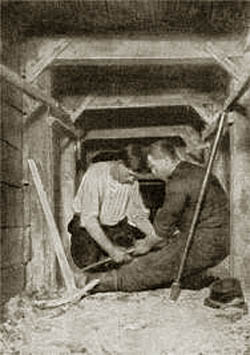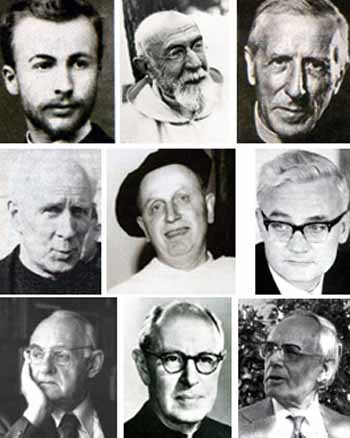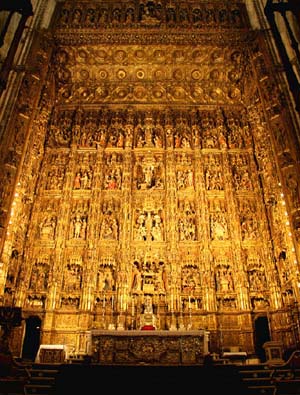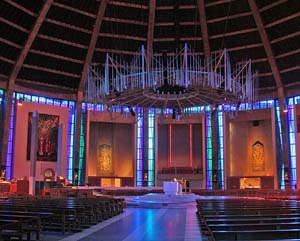 |
Consequences of Vatican II
The Victory of the Sappers
Lyle J. Arnold, Jr.
The era of heretical sappers ended with Vatican II. The term sapper usually designates a combat engineer or soldier who performs a variety of combat engineering duties, such as digging tunnels for construction and concealment purposes. This assignment goes back to the 7th century B.C., when soldiers would tunnel close to the enemy’s bulwarks and "sap" them. Metaphorically, to sap is to undermine by digging away at foundations.

French WWII sappers digging a tunnel |
Among the most insidious heretical sappers that warred against the Church were the Modernists, who did their foul work during the reign of St. Pius X. In their diabolical cleverness, they realized that to succeed in their destruction of the Church, they should work beneath the surface on the main ideas upon which the Church was built.
By the use of subtle-but-deadly sophisms, they sought to remodel Catholicism along the lines of German Idealism and a false mysticism. It was through three basic channels that they performed their sapping, to wit, in matters dealing with:
1. The existence of God, the immortality of the soul, the existence of revelation cannot be known as certain from reasoning. Only from personal experience can we know things - i.e. Agnosticism.
2. Holy Scripture and tradition do not contain revelations from God to men. They produced merely feelings and experiences. God is not personally distinct from man and the world - i.e. Immanentism.
3. Christ did not found a Church with a divine constitution and unchangeable dogmas and moral standards. Rather, these are the result of a gradual evolution and must continue to develop, one giving place to another as times change - i.e. Evolution. (1)
St. Pius X saw through this method of sapping, and his response was reminiscent of something that happened in the 16th century. At that time there were 20,000 bandits infesting the Papal States. Pope Sixtus V exercised his temporal authority by having every captured bandit executed. The nobles who protected them likewise received the sentence of capital punishment. By 1587 the Papal States were the safest territories in Europe. (2)

Modernist and progressivist sappers: from the top, left to right: Blondel, Lagrange, Teilhard de Chardin, De Lubac, Congar, Schillebeeckx, Von Balthasar, Courtney Murray, Rahner |
Pius X reacted much the same way in the spiritual sphere by his perspicacious recognition of the problem and the will to use the necessary authority against heresy. With an angelic insight of the recondite tenets of Modernism, St. Pius X exposed and condemned them in 1907 in the Encyclical Letter Pascendi and in the Syllabus of Errors, Lamentabili sane. Strong disciplinary measures were taken, and so masterful was this work that it was rightfully stated that "Modernism was practically killed in the Church at one blow." (3)
Unfortunately, however, that deadly blow did not smite them all. The sappers continued the Revolution in the Church. So successful was their method of operation, in fact, that their numerous agents not only continued to develop and spread their heresies in secret, but also began to appear in the open. They updated the same modernist heresy, "the synthesis of all heresies," into a more subtle and bold presentation, Progressivism. Vatican II is this heresy incarnate. (4)
In the sorrowful years of the Council, there was no need to work underground. Those who previously had to sap, stepped out in the limelight as Princes of the Church or as theological periti (experts). From 1962 to 1965, the most insidious crime of History took place, started by John XXIII and achieved by Paul VI.
As in the French Revolution, the Council had a phase of "terror," in which the churches were reformed, altars and confessionals abandoned, statues sold, and the modern world entered the churches through music, immodest fashions, lay participation and feminism, to cite only a few. But worse than the bloody terror of the French Revolution was the work of the Conciliar Revolution, which killed millions of souls that adhered to the heresy of Progressivism.
Theologians previously under suspicion as Modernists were raised to “almost rock-star celebrity,’ writes Thomas Bokenkotter in his history of the Church. “The Rahners, Schillebeeckxs, Congars and Küngs were suddenly in great demand on the lecture circuit and their opinions were featured in the headlines of the world press. Bold theories and reinterpretations of dogmas that formerly slumbered in the pages of obscure theological monthlies now became front-page news, and Catholics were regaled almost weekly with the latest Dutch speculations about the Eucharist, Original Sin, or Papal Infallibility." (5)

Above, the main altar of the Cathedral of Seville; below, the conciliar new spirit
 |
The lid was off. From the beginning of Vatican II, the "Johannine revolution" set the stage for a true revolution in the Church. John XXIII completely and openly endorsed the concept of historicity, the idea that Church doctrinal formulas are not immutable in themselves but historically conditioned answers given by the Church to answer the questions of a particular time.
The entire architecture of the Church was changed. What, specifically, is meant by the word architecture in this context? Atila Guimarães gives this description of the pre-Vatican II architecture of the Church:
"There is a certain architectural plan in the whole of the created universe and of History that can be expressed by laws and principles. Let me give an example.
“Architecture is considered the queen of all the arts because all the arts are contained in it. If we imagine a gothic cathedral, we have first the architecture of the cathedral itself with its own rules that explain the edifice. Afterward, we find on its walls stained glass windows, an art in itself. We have sculptures of marble and rare stones that ornament the altars, and the less noble stones in which were built the columns, ceilings, and thresholds. There were also the statutes of Our Lord, Our Lady, the Angels and saints that enrich altars and places of relief in the cathedral." (8)
He goes on to describe all the rich embellishments of the cathedral, both interior and exterior, corporal and non-corporal, from masterfully carved altars and confessionals to the silver and gold works of chalices, ciboriums and patens, to the solemn vestments of the priest, the bells, the organ, the beautiful music and chants, to the Mass itself, with the Blessed Sacrament, the preaching of the priest, and the piety of the faithful.
In the progressivist New Church, all of the above - and more - came under the hammers of destruction. Instead of the architectonic beauty described above, we have a church of banality and vulgarity, ugliness and a man sitting in St. Peter's Chair with a gaze of evil. Here I refer to the possible Third Secret posted April 27 on the TIA website, one paragraph of which reads:
"Now I am going to reveal the third fragment of the secret: this is the apostasy in the Church. Our Lady showed us the individual who I describe as the `holy father'...but there was a difference from a true holy Father, his devilish gaze, this one had the gaze of evil. Then, after some moments we saw the same Pope entering a Church, but this Church was the Church of hell; there is no way to describe the ugliness of that place." (7)
Instead of a monarchial and aristocratic institution, we now have a pathetic anti-church of revolutionary democracy, a feminized (8) and Masonic "Church of hell" (9) which always seeks the lowest common denominator. Clown liturgies, circus liturgies, dancing liturgies, Hindu liturgies, rock liturgies, party liturgies, jazz liturgies, the list is interminable.
We do not know where this will end if Our Lady will not intervene soon to finish with this disgusting Progressivism, and bring us to the triumph of Her Immaculate Heart and the Reign of Mary.
1. John Laux, Church History, TAN: Rockford, 1989, p. 581.
2. Ibid, p. 487.
3. Alban Butler, Lives of the Saints, Christian Classics, 1996, vol. III, p. 475.
4. Atila S. Guimaraes, "Liberals, Modernists and Progressivists," TIA website
5. Thomas Bokenkotter, A Concise History of the Catholic Church, New York: Image Books, 1979, p. 433.
6. Atila S. Guimaraes "The Fidelity of the Remnant Throughout History," TIA website
7. Taken from a facsimile of the true Third Secret, "Third Secret of Fatima," TIA website, posted 4-27-10.
8. Lyle Arnold, "Church's Feminization: Tool to Merge with the Revolution," TIA website, posted 9-1-10.
9. Lyle Arnold, "Vertical versus Circular Architecture," TIA website, posted 12-30-09.

Posted September 27, 2010

Related Topics of Interest
 The Laws of Thought and Progressivism The Laws of Thought and Progressivism
 Vertical versus Circular Architecture Vertical versus Circular Architecture
 The Fidelity of the Remnant Throughout History The Fidelity of the Remnant Throughout History
 Church's Feminization: Tool to Merge with the Revolution Church's Feminization: Tool to Merge with the Revolution
 A Pope with Devilish Eyes A Pope with Devilish Eyes
 Church Pomp and Grandeur Must Be Destroyed Church Pomp and Grandeur Must Be Destroyed
 A Mass with Clows at Salzburg Cathedral A Mass with Clows at Salzburg Cathedral
 Conservatives, Traditionalists, and Counter- Revolutionaries Conservatives, Traditionalists, and Counter- Revolutionaries

Related Works of Interest
|
|
Vatican II | Hot Topics | Home | Books | CDs | Search | Contact Us | Donate

© 2002-
Tradition in Action, Inc. All Rights Reserved
|
 |
|